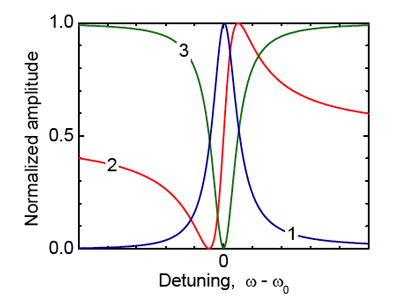| Posted: August 26, 2010 |
Investigation of Fano resonance in plasmonic nanostructures and metamaterials promises new applications |
|
(Nanowerk News) Nanostructures with Fano resonance fabricated from plasmonic materials and metamaterials could give rise to a range of applications such as label-free chemical and bioanalysis probes that are adaptable to high-throughput applications, electronics-free sensor for sensing physical parameter changes such as temperature or pressure. Fano resonance permits the creation of ultracompact nanoantennas which can be used in mobile telephones or wireless connections and many other devices (e. g. interferometers, displays, systems for near-field imaging, high-quality optical waveguides, etc.).
|
|
Fano resonance was discovered by Ugo Fano in 1961 and exhibits a distinctly asymmetrical line profile. This resonance allows the organization of interference phenomena on nanoscale which is a feat to organize in classical optics. In plasmonics, this resonance can be very sharp and sensitive to different parameters. It is because of this unique sensitivity of Fano resonance that caused scientists to be interested in investigating its usability in various materials and applications.
|
 |
| Schematic of different resonance shapes. (1) Usual symmetric resonance with Lorenzian shape (blue), (2) asymmetrical Fano contour (red), and (3) particular symmetrical Fano contour (green), which corresponds to electromagnetically induced transparency (EIT).
|
|
The majority of research on Fano resonance for last 50 years was related to quantum systems. However, about three years ago it was found that Fano resonance can be realized in plasmonic materials and metamaterials. This novel discovery was made independently by a few scientific groups. Professor Boris Lukiyanchuk, from the Data Storage Institute (DSI), a research institute of Singapore Agency for Science, Technology and Research (A*STAR), was among the pioneers investigating Fano resonance in such materials.
|
|
Results of his investigations, together with complimentary studies of distinguished groups from Rice University, Houston, USA, Imperial College London and University of Southampton, UK and also from the University of Stuttgart, Germany are presented in their review paper in Nature Materials, published online on 23 August 2010.
|
|
"Due to Fano resonance's sensitivity, integration of this effect into a new recording media might help us to develop a new recording technology." says Dr Pantelis Alexopoulos, Executive Director of DSI.
|

